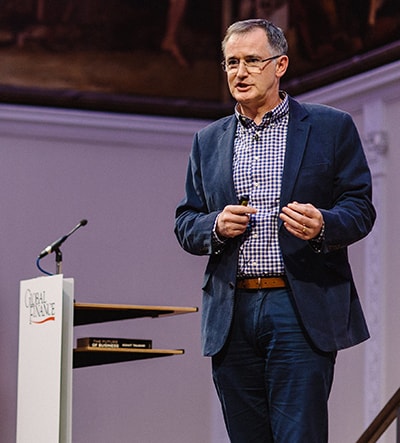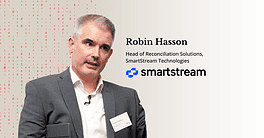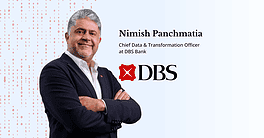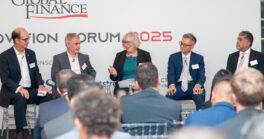Paul Cobban, chief data and transformation officer at DBS, shares ways banks can unlock and monetize customer data journeys.

Global Finance: When it comes to using data, what strengths do banks possess that will help them differentiate themselves from big tech disrupters?
Paul Cobban: Both banks and big tech companies are data rich. However, banks have much more personalized data than the techs. Banks know the names of the customers, where they live, their age and gender, how much they earn, their debt levels, what they spend their money on, where they go on vacation. Big tech companies have to work hard to get to this level. This is clearly an advantage in understanding customers and therefore offering better products and services, but with it comes responsibility to use data in appropriate and transparent ways.
GF: How has the relationship between business, management and IT changed and what impact will data science and analytics have on the running of banks in the future?
Cobban: In a truly digital organization, the boundaries between business and IT blur to the point that they disappear. In particular the data-science units are best placed in the business organization, as the most important element in getting value from data is to ask the right questions based upon real business problems. I have seen many data-lake-style projects fail because they are positioned as technology projects. By embedding data-science teams in the business, the leadership becomes more and more familiar with what data can and cannot accomplish and what the blockers are in getting easy access to data.
GF: What behavioral changes has DBS made to get rid of the HiPPO [highest-paid person’s opinion] mentality and how does this help you better understand customer needs?
Cobban: At DBS we have an emerging process known as “culture by design.” This involves defining the target culture at a fairly granular level. For example, at DBS the overall positioning is a “22,000 person start-up.” The next step would be addressing the areas where we need to improve, and then designing countermeasures to address said areas. One recent example centers around meeting behaviors, where we want to ensure everyone has an equal share of voice. We have introduced a ritual called Meeting Mojo—where Mo is the Meeting Owner and is expected to ensure equal share of voice for all participants, and Jo is the Joyful Observer who is appointed by Mo and keeps Mo on track. We have been pleasantly surprised by how effective this has been in getting a variety of opinions in a meeting situation. One other ritual we have introduced is 3S1R, which is three suggestions (3S) and one recommendation (1R). Anyone asking for a decision is expected to come up with three viable data-driven options and to make a recommendation.
GF: How do you marry prediction through algorithms, and insight through experimentation, to improve customer journeys?
Cobban: At DBS we aspire to be a data-driven company, defined as a business that maximizes the value from its data. This value comes in many shapes but can be categorized into two broad types. The first is predictive/detective algorithms that tend to use deeper data science and Big Data to augment a process—for example, a recommender, fraud detection or credit decisioning. The second is to enable better insight-driven decision-making by the ritualistic use of data. Where data does not exist, we run experiments. There is no better example of how these two types come together than through customer-journey design. In a digital world it is essential that all digital customer engagements are instrumented so that we can see how customers are navigating their journeys, and thereby identify any struggles that we can subsequently redesign. However, all this data releases a new level of value—we can begin to understand the behavior of customers at a more granular level, to the extent where we can create models that predict behavior. If we target this approach at revenue-generating “moments,” we can have significant impacts. At DBS, we call this customer science.
GF: How will the launching of 150 developer APIs help DBS in providing invisible banking?
Cobban: Nobody wakes up in the morning and says, “It’s a great day to do some banking.” People want everyday banking to disappear from their lives. In order to do this, we need to embed the banking part of a customer “job” inside the overall customer journey. To make this happen, we need to work with partners who provide solutions around, say, travel, leisure, medical, and integrate the banking component. Having a rich set of available APIs makes this so much easier. We already have over 50 partnerships with brands such as McDonalds and MSIG.



